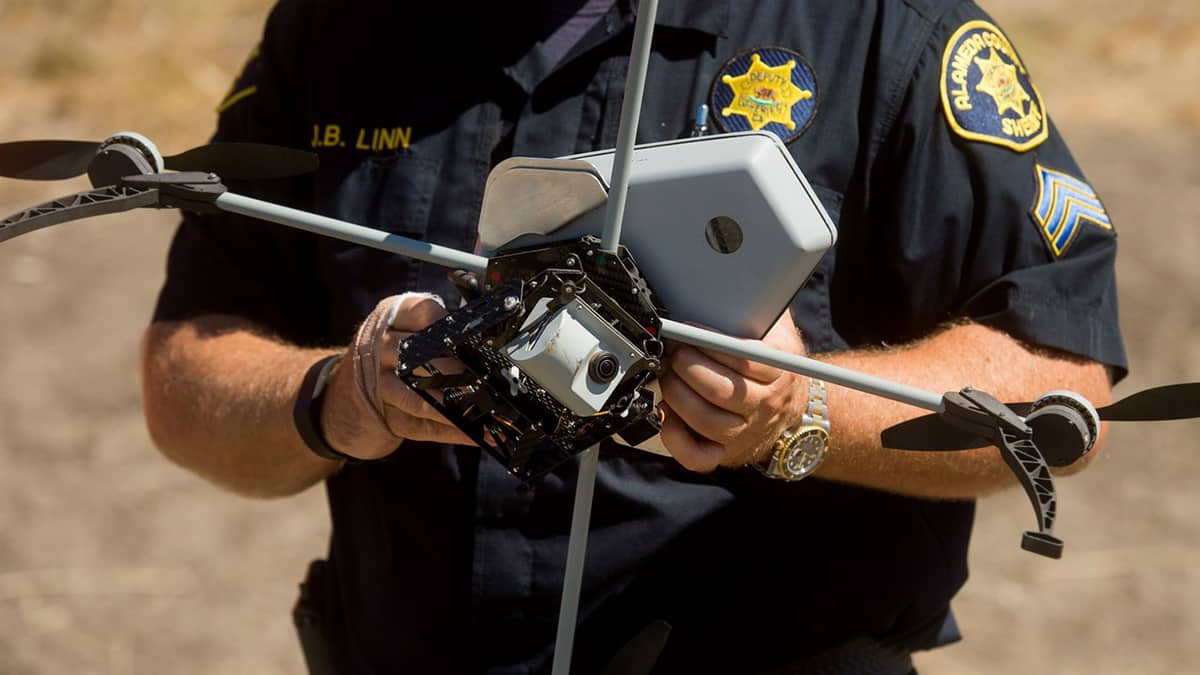3 Things Public Safety Officials Should Know About Drones
By Jonathan Rupprecht, Esq. for Drone Analyst
This past year, as I attended many drone conferences, I was struck by how eager public safety officials and first responders are to learn how they can incorporate drones into their operations. Their curiosity is not without good reason. Small drones with video and infrared cameras are excellent tools for things like situational awareness of critical incidents, search and rescue operations, crime scene processing, and fire damage assessments.
If you are part of one of these outfits and are considering an unmanned aircraft system (UAS) for your operation, then you should know the FAA treats Public Aircraft Operations differently than civilian aircraft operations. At first glance, the FAA’s requirements for Public Aircraft Operations seem overwhelming, but take heart. Some of the Federal Aviation Regulations (FARs) do not apply to you, and hopefully this post will clarify and ease what’s required of you.
At the outset I need to say I highly recommend speaking with someone who is knowledgeable about the FAA’s FAR’s, especially if you are seeking to fly your aircraft as a public aircraft operation. The FAA will make sure you follow the very strict requirements to be classified as a public aircraft. If you do not meet the requirements, you will be considered a civil aircraft and could be in violation of multiple regulations.
At the outset, you should know about these three benefits of public aircraft operations status:
- The pilot of a public aircraft does NOT need to be an FAA licensed pilot.
This comes as one of the biggest surprises to public agencies. Title 14 of the Code of Federal Regulations, Section 61.3says, “(a) Required pilot certificate for operating a civil aircraft of the United States. No person may serve as a required pilot flight crewmember of a civil aircraft of the United States[.]” Notice that is said “civil aircraft”, not “aircraft” which would mean all aircraft. Instead, public agencies self-certify their pilots which means that training can be specifically tailored to meet the needs of the public agency as opposed to picking one of the less applicable manned pilot certificates.
- The aircraft flown does not need to have an FAA airworthiness certificate.
Title 14 of the Code of Federal Regulations, Section 91.203(a), “no person may operate a civil aircraft unless it has within it the following: (1) An appropriate and current airworthiness certificate[.]” Additionally, 91.401 says, “(a) This subpart prescribes rules governing the maintenance, preventive maintenance, and alterations of U.S.-registered civil aircraft operating within or outside of the United States.” Notice that they both said “civil aircraft.” This means that public aircraft operations self-certify their own aircraft and maintenance.
Are you starting to see a pattern here?
It’s important to note you cannot slack on operations or maintenance standards. If there is an accident, depending on your entity and the jurisdiction, there is potential for liability. Civilian aircraft are flying according to the safety standard created by the FAA. If you self-certify your pilots, aircraft, and maintenance, then the burden will be more on YOU to prove that you, operating under your own standards, were safe, as opposed to saying you flew under the FAA’s standards which they said were safe. It might be helpful to get someone who is extremely familiar with drones to help set up maintenance standards. (I would suggest Gus Calderon, a commercial pilot who ran his own Part 135 aircraft charter company and has extensive expensive in multi-rotors.)
- Public aircraft operators can rapidly deploy their drones in emergencies.
Commercial operators operating under FAA Section 333 exemptions and their ‘blanket’ certificates of waiver or authorizations (COA) are required to file a notice to airmen (NOTAM) at least 24 hours before operations. This is extremely impracticable because 24 hours is a long time and the NOTAMs are usually for a particular location.
Public aircraft operators can ask for their COAs to not have a 24-hour NOTAM. Moreover, provided that a public aircraft operator already has a COA in place at some location, they can rapidly move that location and obtain an emergency COA for another location outside the geographic boundaries of their original COA. Keep in mind that this all is with the understanding you have a COA in place already, so public safety officials should start looking into setting up things before they need them. Like the Boy Scout Motto, “Be Prepared.”
I hope this helps inspire you to use unmanned aircraft for public safety purposes. Public aircraft operators have a difficult time completing their jobs, but the Federal Aviation Regulations are not as difficult as you might think. Stay safe!
